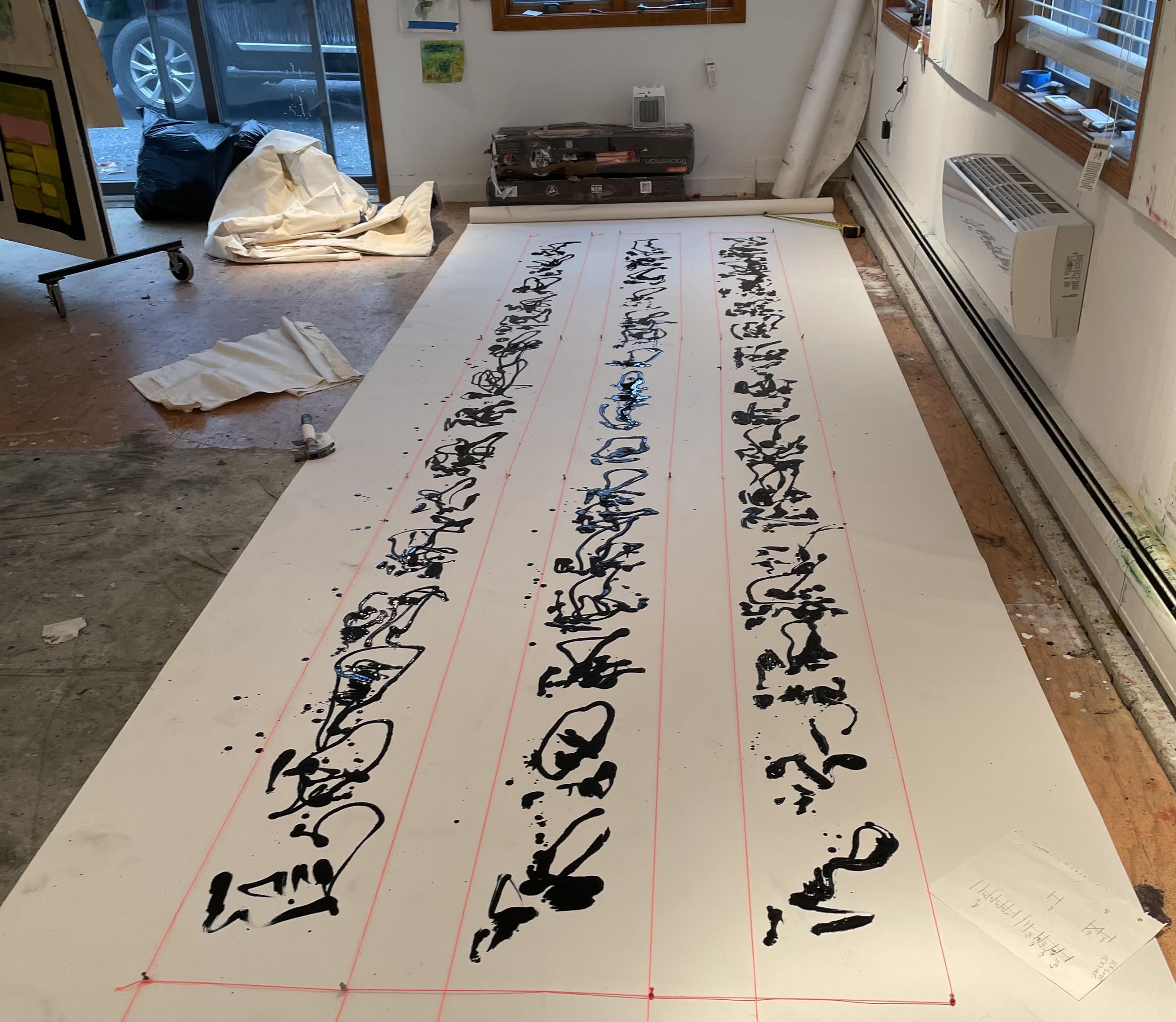Dreaming Africa
Play, aliveness and creativity are closely connected in Winnicott's work. With the Squiggle game, Winnicott helped his patients to transform doodles into creative forms of personal meaning. Doodling can release the not yet known through the hand of the artist and in the process make reveries and waking dreams available. In the video that follows, I have attempted to use a free calligraphic form of the squiggle to capture such waking dreams.
As with the transitional object, reverie cannot be said to be created nor found. However, it is in the engagement of a creative process that reverie best reveals itself and we are most familiar with reverie appearing for both the patient and the analyst in the creative setting of analytic work. In this sense, reverie might be said to be a natural product of aliveness and creativity. In turn, creativity can then be vitalized by reverie. Picasso noted that his inspiration typically found him when already working creatively.
As I describe, the squiggle game provides a creative space, where, when engaged in playfully, waking dreams and reverie emerge. This space is best entered into when there is a tension between the intentional and the unintentional of the process. The artist, Paul Klee, described drawing as taking a line for a walk. That is, we need some measure of intention, but the line needs to be allowed to have a life of its own. So often the dog appears to, or perhaps does, walk its owner.
Following on from Winnicott's squiggles which he did with himself, I have explored a calligraphic squiggle process to bring my own reverie to life. The analytic situation and engagement have an aesthetic determined by the setting and the nature of the verbal and non-verbal rapport that allows for receptivity and reveries in patient and analyst. Likewise, at the start of a painting, I pay careful attention to the aesthetic setting. Light, music and a sense of unharried engagement are essential parts of this aesthetic. The materials are carefully chosen. The canvas or paper provide capacity of the surface to receive the chosen medium. The nature, color and viscosity of the medium are important aspects of the vitality of the work. The brush must be chosen for size, shape and nature of the bristles.
For this work I chose to lay 15 feet of white primed canvas on the floor which would allow a combination of drawing, pouring and dripping of the paint. I wanted the size of the calligraphic marks to be large enough that my full arm needed to be engaged. I find that the full arm encourages the unintentional. The setting invited the first mark which functions like Winnicott's first mark in a Squiggle. Then I respond, mark after mark with a fluid motion of dripping pouring and drawing. As I have said, I was looking for that transitional space of creativity where I am neither intentionally producing forms nor avoiding the natural emergence of forms or figurative elements in the work. The work holds the paradox of the space between the intentional and unintentional almost as though it remains unclear whether the forms were produced or found. Stepping back from the completed calligraphic image I began to discern movement and figurative forms. That is, trying to discover the forms created. The photograph below shows the painting, on the floor, with the calligraphic squiggles complete, before the painting was converted into a video. In this work I decided not to alter any of the calligraphy as it emerged. In other works, I have revised the initial calligraphy to find and transform the images very much along the lines of an ongoing game of squiggle.
I do not typically convert my work into video but in this case, I was looking for a way of showing a 15-foot painting and video was a way to do it. Of course, the movement in the video is computer generated. Within the painting I found figurative forms which reminded me of South Africa (my birthplace) and specifically the migration and displacement of people under Apartheid. A waking dream through reverie had taken form. The movement of the calligraphy through use of the video resonated with the sense of disintegration of communities and the yellow ochre background captured the geographic context. The choice of Abdullah Ibrahim's Mannenberg, the unofficial anthem of the anti-apartheid movement, seemed just right.
Jonathan Palmer MD
Training and Supervising Analyst, Boston Psychoanalytic Society and Institute
jonathanpalmermd@gmail.com
www.jonathanpalmerart.com
